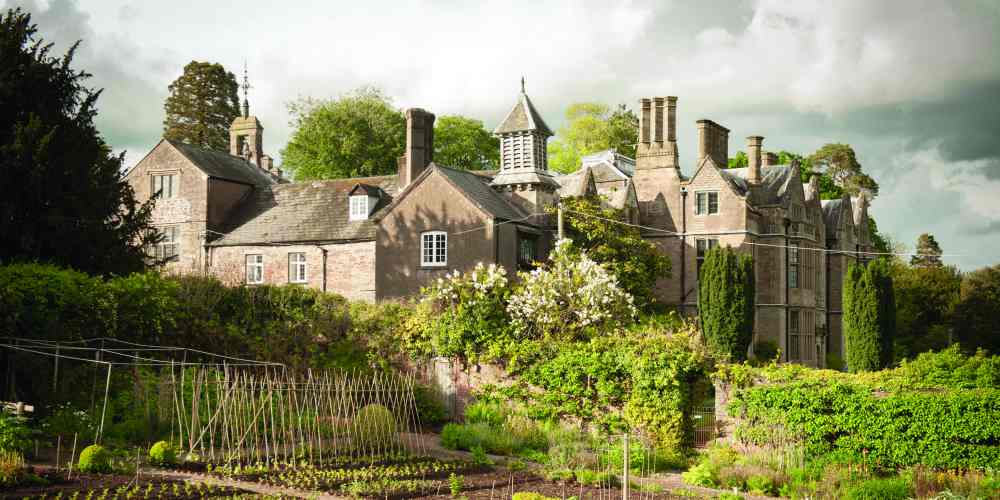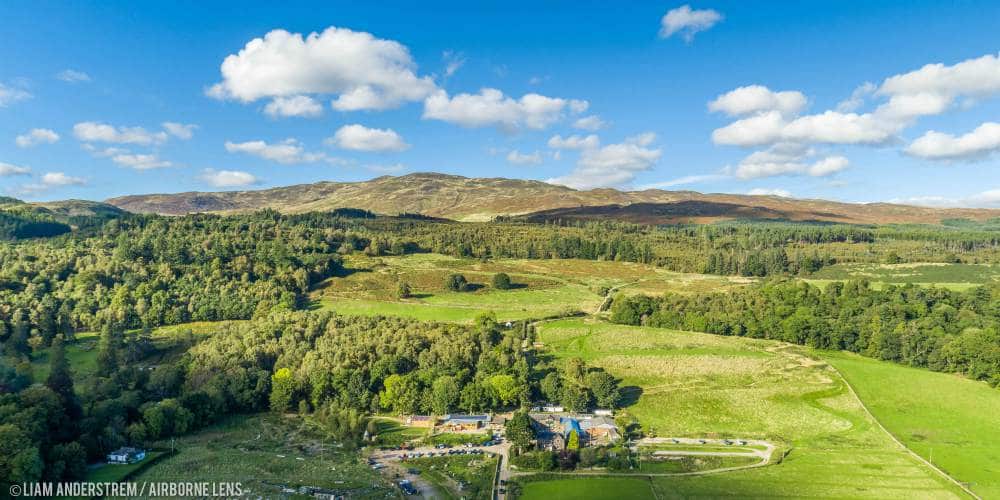Holly Tuppen investigates the rise in family-friendly holidays around the UK that put nature first, fund crucial conservation efforts and encourage the next generation to get stuck in

Staycations
You don’t have to delve deep these days to uncover the sorry fate of our natural world. Last year, the World Wildlife Fund released figures showing that species are declining at 100 to 1,000 times faster than the natural rate. This devastation is attributed to climate change and landscape destruction; for most of us, orangutan-destroying palm oil, illegal logging in the Amazon, or extractive industries such as fracking and oil drilling are the culprits that spring to mind. Although less spoken of, nature at home is under threat, too. Intensive farming and urban sprawl are mostly to blame for halving bird numbers since 1970 (the swift has seen a 25 per cent decline in just five years), decimating the hedgehog and butterfly populations, and insects, such as the New Forest cicada, vanishing altogether. It’s not all doom and gloom; people are more motivated than ever to protect the natural world, even if economic structures and politics need to play catch up.
Last year, Chris Packham drew up a ‘People’s Manifesto for Wildlife’ with leading experts to corral the population into action. Hundreds of adults and kids took to London’s streets marching against what Packham describes as “sleepwalking into an ecological apocalypse”. We’re also waking up to the health benefits of spending time outdoors, both physically and psychologically. Projects such as the RSPB’s Family Wild Challenge and The Wild Network are ensuring that kids of all ages and income groups get the opportunity to enjoy nature. Tourism is playing an active role, too. From Kent’s soul-stirring marshes to Scotland’s rugged highlands, estate owners and conservationists are using the funds raised from holiday cottages and glamping sites to protect the nature that surrounds them.
Drawn to these pristine environments to slow down and reconnect with nature, families get the chance to see what biodiversity looks like, and understand why we need to protect it. During a long weekend at Old-Lands in Wales this winter, my three- and five-year-old boys transformed from embarrassingly whiny urbanites to gung-ho foragers and wildlife spotters. We all went home with a renewed resolution to do our bit, enthusiastically filling our tiny patch of garden with bug hotels and bird boxes. Despite suffering neglect during a couple of cold months, spring has brought with it a few residents; it may be a small triumph, but it’s good to have regeneration in our midst.
See our pick of the 5 best UK staycations >>

5/5 Old Lands, Wales
Old-Lands is a sprawling 80-acre estate in the heart of Monmouthshire within easy reach of the Wye Valley and the Black Mountains. Having been in the Bosanquet family for 200 years, the whole estate is managed on traditional green principles – ‘slow to change and careful of consequences’ is the family motto. A proportion of the estate has been handed over to the Gwent Wildlife Trust to restore a flower-rich meadow. Converted stable blocks and barns are clustered around the main (rather grand, sandstone) house, providing home self-catering accommodation. Resident naturalist, Sam Bosanquet, organizes nature walks for kids pointing out everything from fairy-tale fly agaric mushrooms to otter spraints and 50-yearold swan mussels. A nature room is home to pond-dipping kits, oars for the lake’s rowing boats, and a chest of curiosities, including a snakeskin and skeletons. Letter-boxing helps to encourage little legs around the estate, and an on-site Forest School gives parents a break when needed. The honesty shop, stocked with intriguing home-grown produce and local specialities, means there’s no need to leave the premises.
Go wild: Old Lands offers a one week stay in a two-bedroom cottage from £395

4/5 Elmley Nature Reserve, Kent
Elmley is a 3,200-acre estate on the Isle of Sheppey, an island in the Thames that seems miles away from anywhere despite just being an hour from London. It’s the UK’s sole privately-run nature reserve and the only place in the country you can experience a reserve overnight. For over 40 years, Philip and Corinne Merricks have managed to combine sensitive cattle farming and wildlife conservation, and since 2013, their daughter Georgina has helped to fund conservation efforts using offered, handcrafted holiday huts. With floor-to-ceiling windows, kids can watch dragonflies, owls, and hares from the comfort of bed, as well as on birdwatching tours, pond-dipping expeditions and a mini safari along the two-mile drive. Nature trails and bird hides welcome visitors from all over the world, hungry for a slice of this protected area.
Go wild: Elmley Nature Reserve offers one night in The Ferryman’s, The Saltbox and The Damson sleeping two adults and two young children from £170

3/5 Lower Mid Estate, Cotsworld
Property development company Habitat First Group owns Lower Mill Estate in the Cotswolds and Silverlake in Dorset. The company transforms neglected sites of natural interest into holiday and housing developments that bring people, ecology and sustainable architecture together. That may sound like sales spiel but it’s not – there’s even a resident ecologist, Dr Phoebe Carter, to prove it. At Lower Mill Estate it has installed 150 nest boxes to conserve red listed house sparrows, created a ‘Habitat House’ for bats, and built artificial otter holts (homes); numbers of each have increased year-on-year. As well as relaxing in the luxury eco homes, paddle boarding and cycling, families can head out on a Sunset Adventure Safari across the lagoons in search of beavers, while avid little wildlife spotters can enjoy the Miss Mouse Adventure trail.
Go wild: Habitat Escapes offers three nights at four-bedroom property Ria Formosa, Lower Mill Estate from £964

2/5 Comrie Croft, Scotland
Andrew Donaldson is every bit the warm and enthusiastic Scot you want to be running one of the UK’s most sustainably minded and activity filled holiday destinations. It’s a vibe that trickles down throughout Comrie Croft’s wholesome setup. Just under one hour from Glasgow or Edinburgh, the farm’s 250 acres of woodlands have been restored (planting thousands of native trees) to create a home for species such as ospreys, barn owls, roe deer, pine martens and red squirrels. Mountain biking trails encourage all ages to get outside, and alongside den building and rope swings, every week in the summer, Aquila Ecology leads kids on Wild Wednesday nature detective courses. Older kids will love the local Do It Outdoors survival activities building shelters and foraging, and whether you fancy wild-camping, clamping in a Nordic kata tent or enjoying home comforts in a converted farmhouse, Comrie Croft has accommodation to suit all ages.
Go wild: Camp at Comrie Croft for £10 (£5 for under 18s) per night; Nordic katas are from £299 for five nights and family rooms from £45 per room per night

1/5 Agent’s House & Custom’s House, Brownsea Island
The National Trust protects 780 miles of coastline in England, Wales and Northern Ireland. It has established several special areas for conservation, and last year, welcomed a record number of families. With access to some of the UK’s most beautiful estates and remote places, the National Trust packs a punch when it comes to holidays, too. Not only do guests get exclusive access to castles, gardens and wilderness, but they can also rest assured their pennies are going back into conservation efforts. Agent’s House and Custom’s House are the only two holiday cottages on a small island off the coast of Poole in Dorset. At certain times in the year, rangers invite visitors to get stuck in, demonstrating what it takes to protect Brownsea’s common lizards, tiger beetle, oyster catchers, red squirrels, deer and many more rare species.
Go wild: The National Trust offers three nights at three bedroom Agent’s House on Brownsea Island from £447

